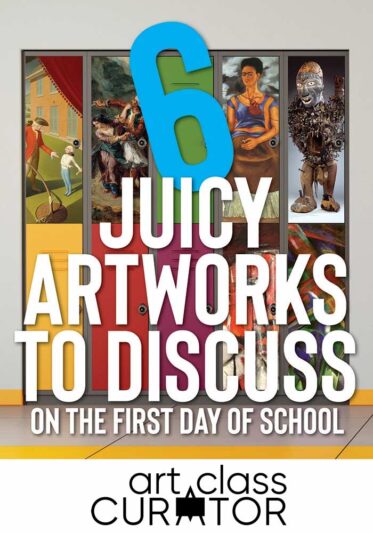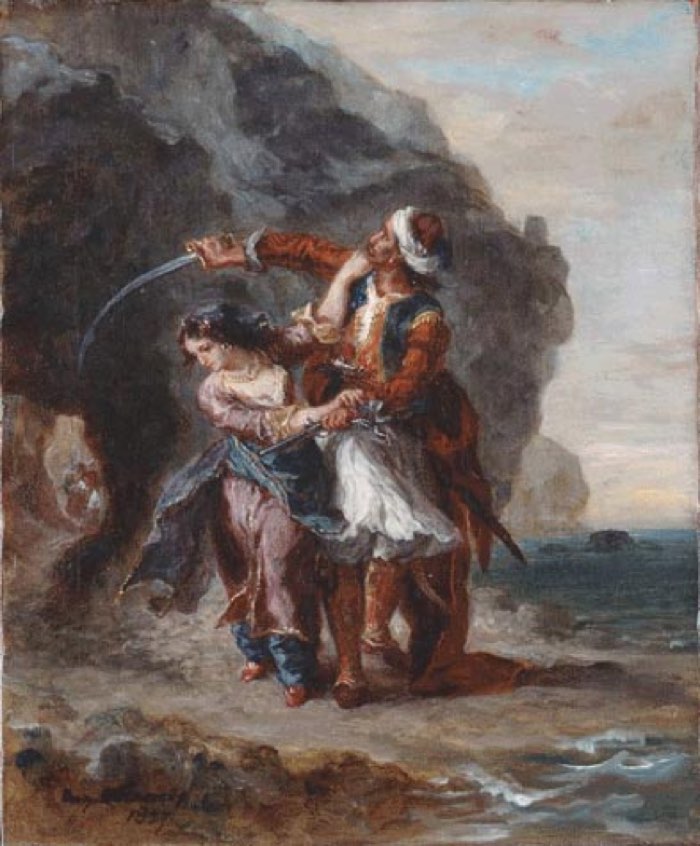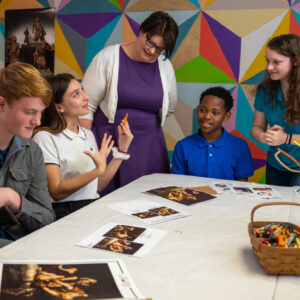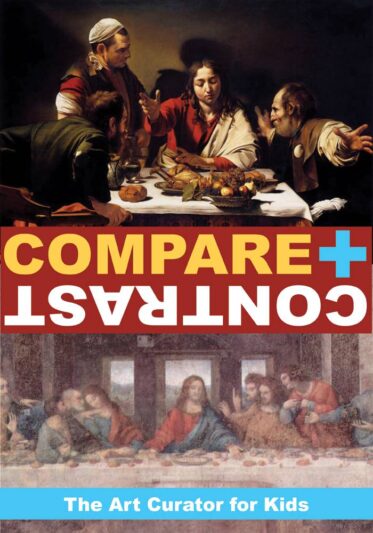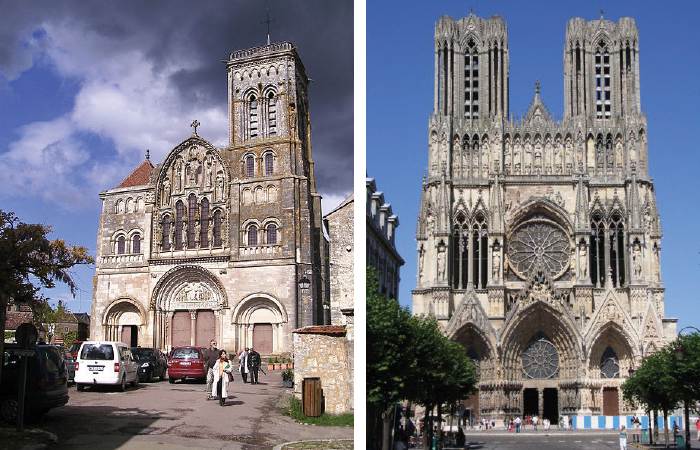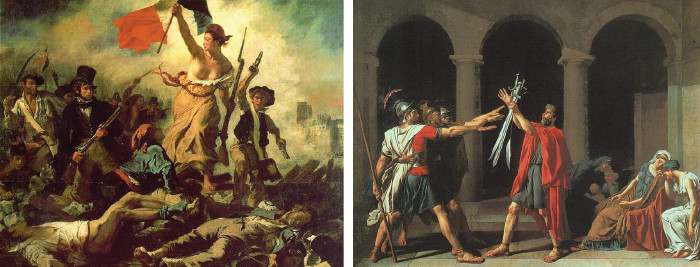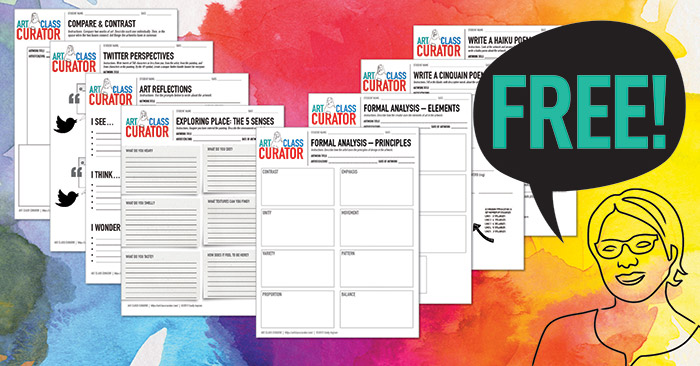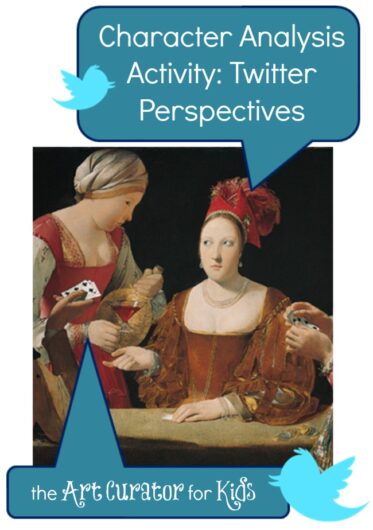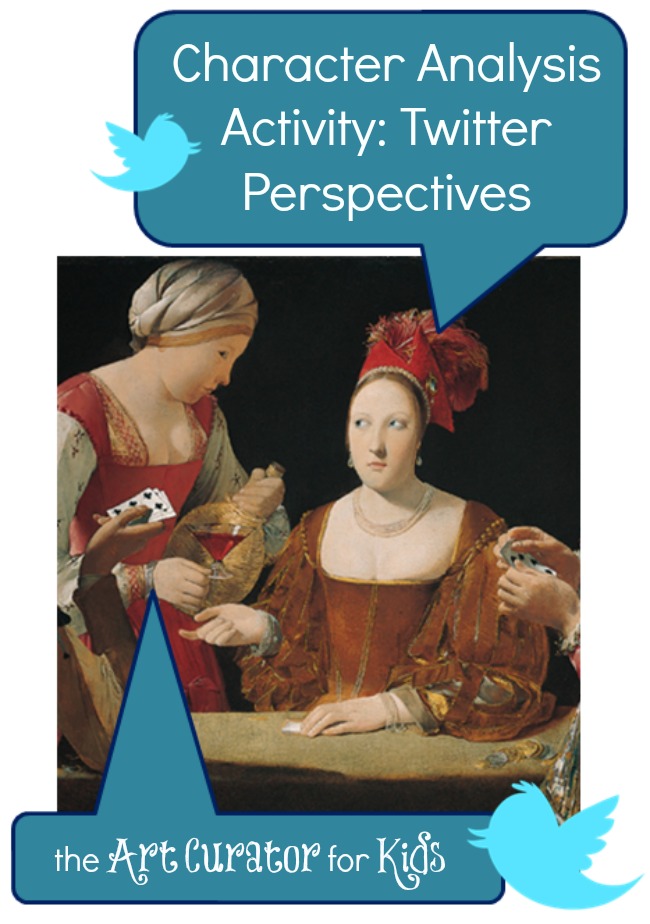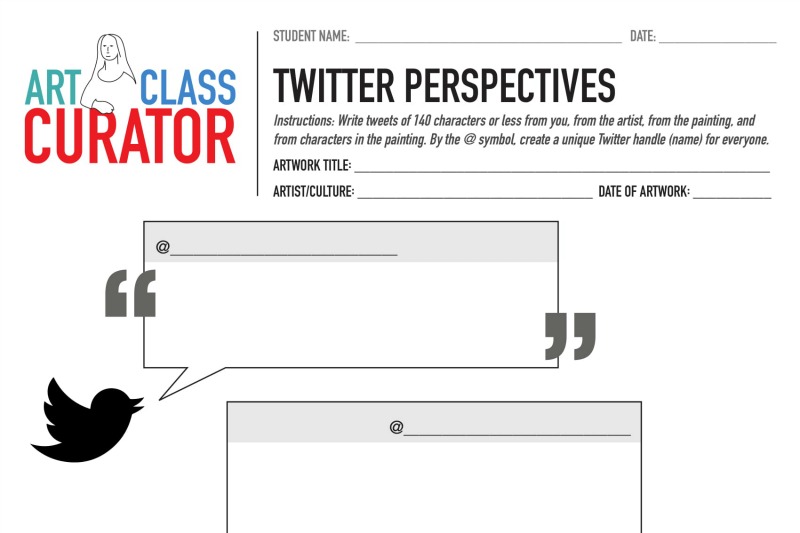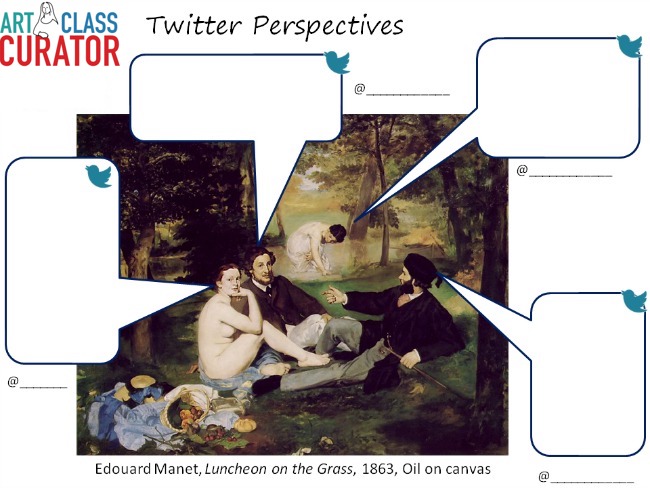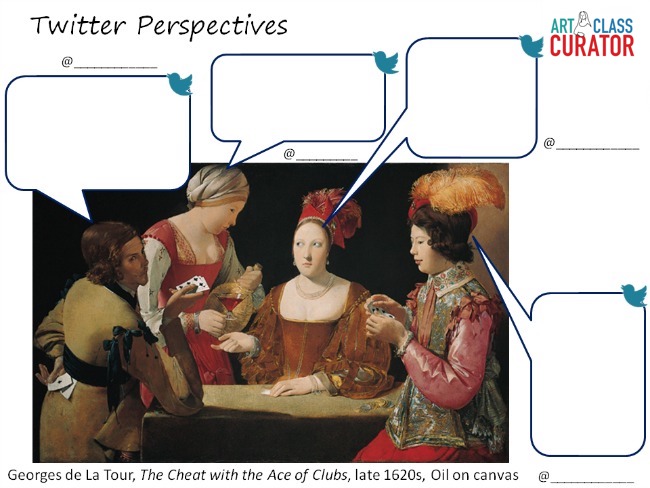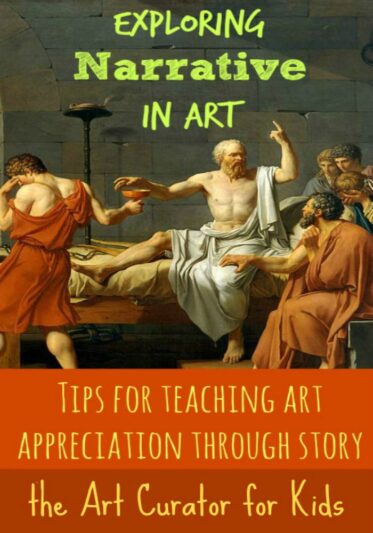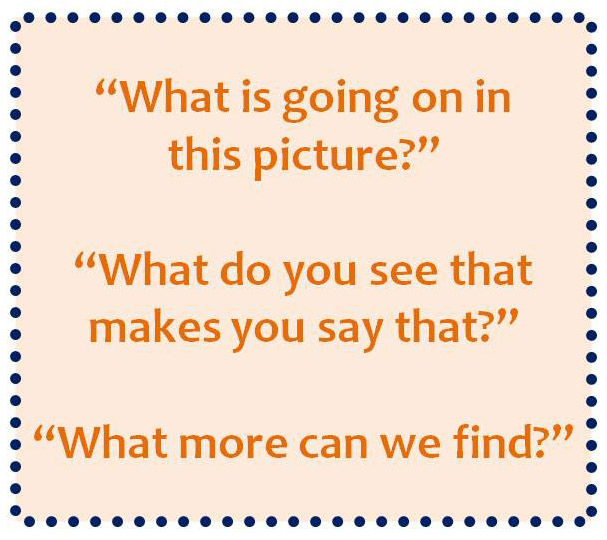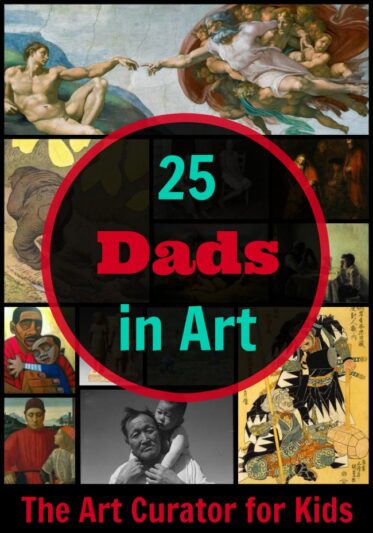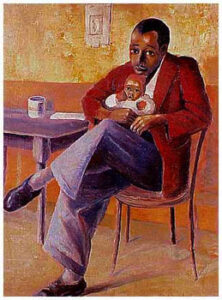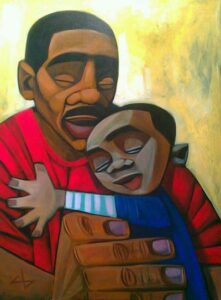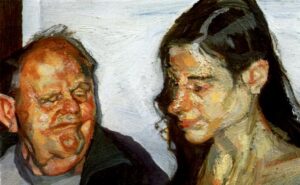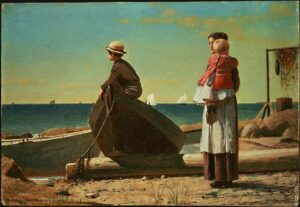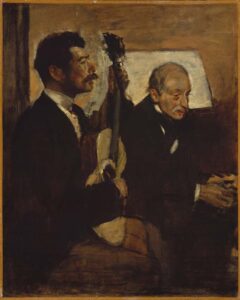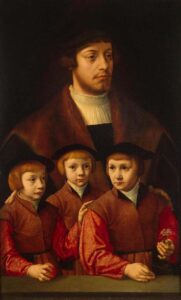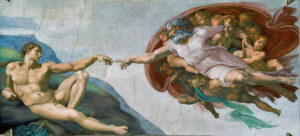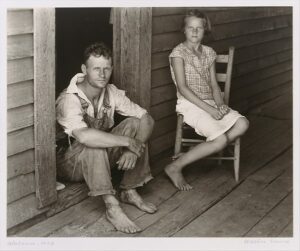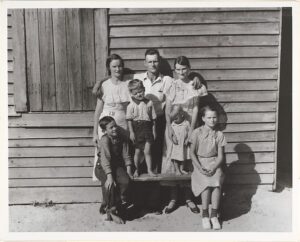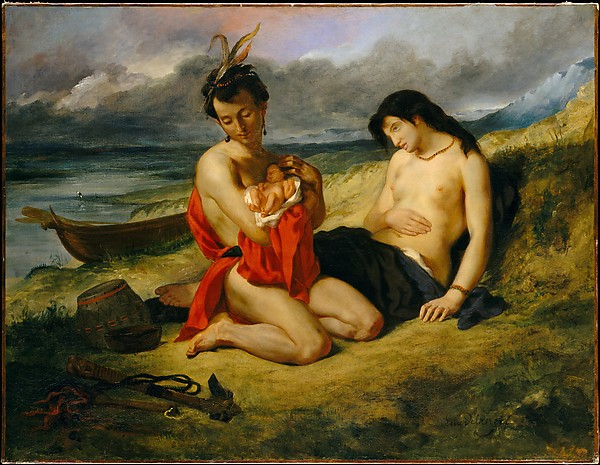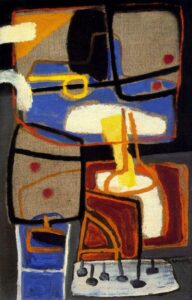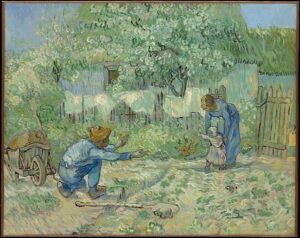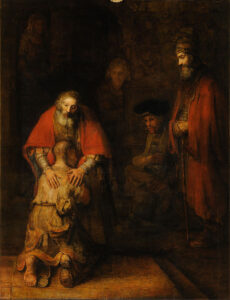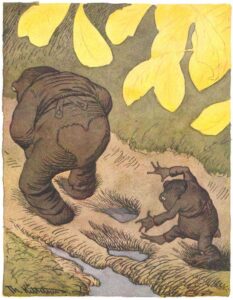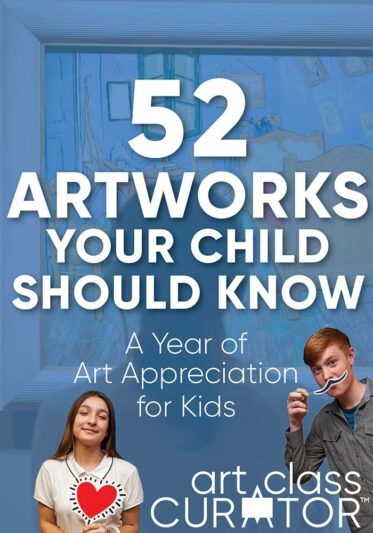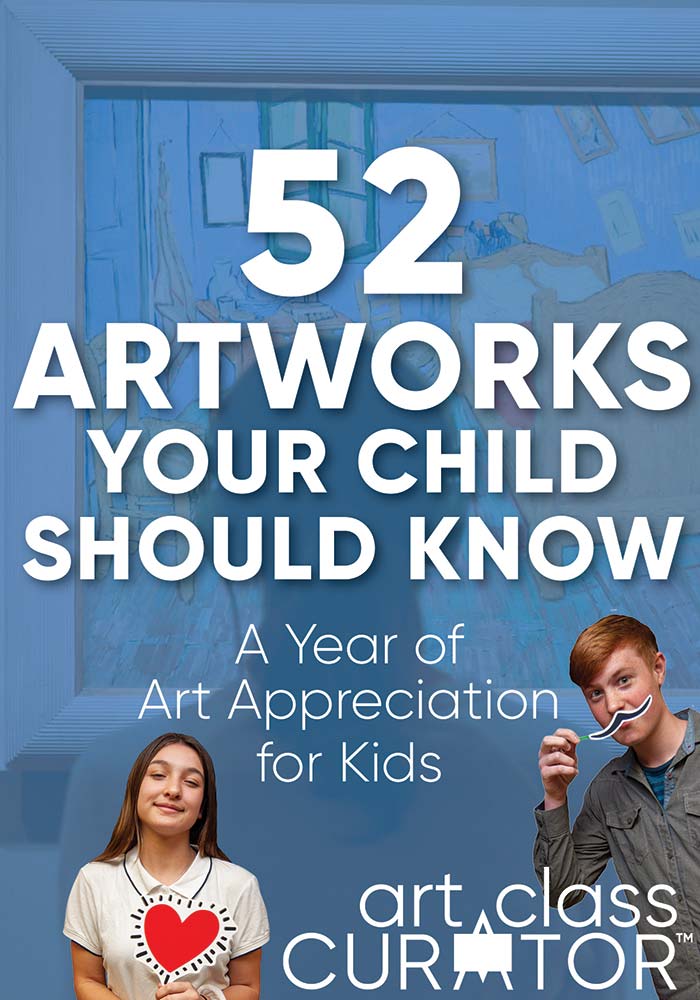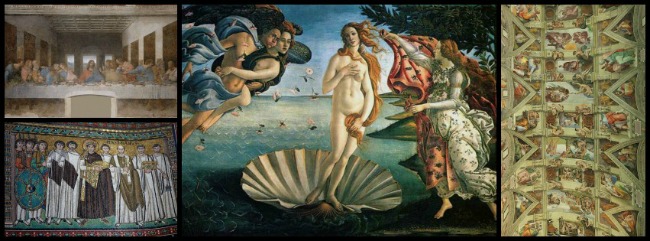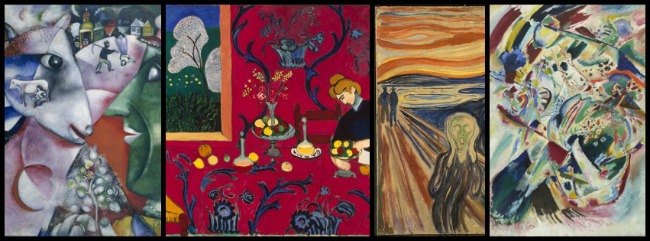Inside: Six works of art with discussion questions and creative activities that make perfect first day of school art activities for art teachers of any grade.
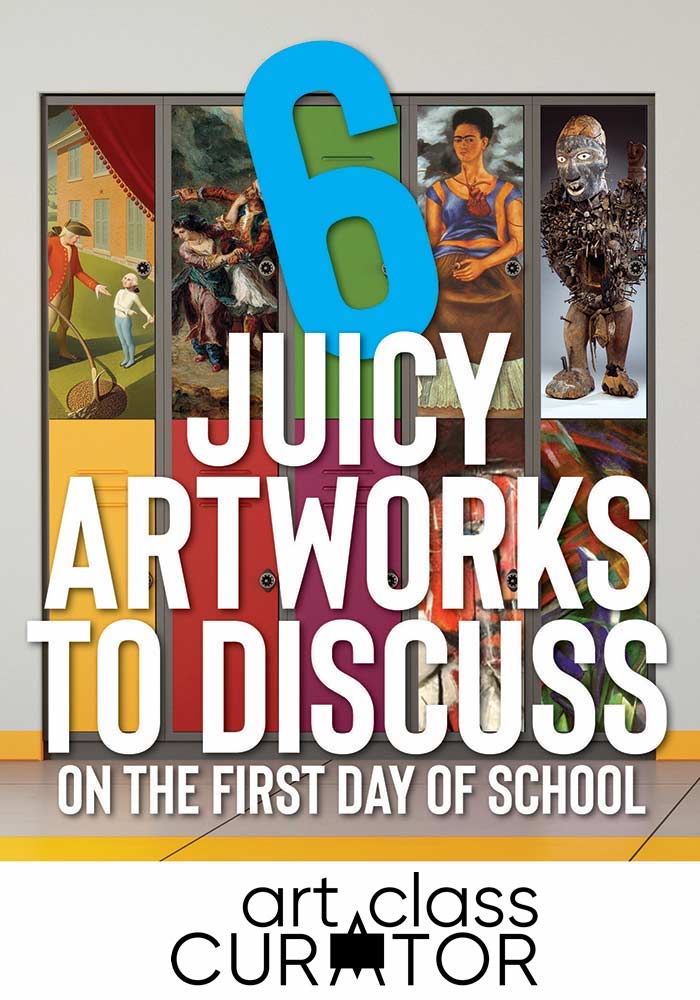
August is coming…
I know.
Summer just started! You’ve barely had a chance to sunbathe or swim, and yet it’s almost time to attend in-service meetings, set up your classroom (or reorganize your cart for the thousandth time), and figure out how to make your favorite projects fit into the new lesson planning requirements (again).
There’s so much to do and the calendar is mocking you. Why, oh why, can’t you cram in a little weekend getaway? You just need a few days days to relax. Please?
Preparing for Back-to-School
Nevertheless, as you move through the stages of back-to-school grief, you remember all the things you love–the students you adore, the insightful comments and outstanding art, the silly jokes, your family of coworkers, the helpful volunteers, and those precious moments when you watch knowledge light up a student’s life.
The new school year will be exhilarating, exhausting, frustrating, and wonderful. And before you worry too much about what to do when you’re faced with class after class of familiar and brand new faces, let me help you out!
I won’t tell you how important it is to start the school year off strong, you already know. (And, if you’ve forgotten, I’m sure the many staff meetings you’re about to attend will remind you.) The school year is a marathon, not a sprint, and while getting off on the wrong foot won’t doom your year, it will make it harder to hit your stride. So, set the stage for stellar behavior with classroom management techniques, then show your students that art class is for more than making art–it’s for thinking critically about works of art and exploring the worlds both within and around them.
First Day of School Art Activities
Every year, I see frenzied Facebook discussions with art teachers trying to determine which project will not only get the kids hooked but also be feasible for the first day of school art activities. A lot of great ideas are thrown around, but I think there’s a easier way to get them excited.
Surprise your students by introducing them to a rich, fascinating work of art. A lot of teachers tell me that their biggest fear about incorporating more artworks and art history into their curriculum is the prospect of students being upset because they aren’t making their own art. That’s why the first day of school is such a great time to do this! When you set the expectation from the very first day***, your students won’t be confused, and they’ll know just how fun it can be! (***Or, the first week. Because goodness knows the attendance rolls will get mixed up, or you’ll have a dozen dress code infractions, and WHAT?! The bell is ringing already?!)
Let your students know:
Art class is more than just making art. We look at art and we talk about it together. We do this a lot.
And it. is. AWESOME.
Without further ado, here are six of my favorite artworks to share with students on the first day of school. Each one offers a lot for your classes to sink their teeth into and whet their appetite for the rest of the year! I’ve included links to blog posts that go into more depth for each piece and included some fun activities in case you’ve got enviable free time on the first day of school.
Also, check out my tips for an engaging classroom art discussion in this post.
The Two Fridas by Frida Kahlo
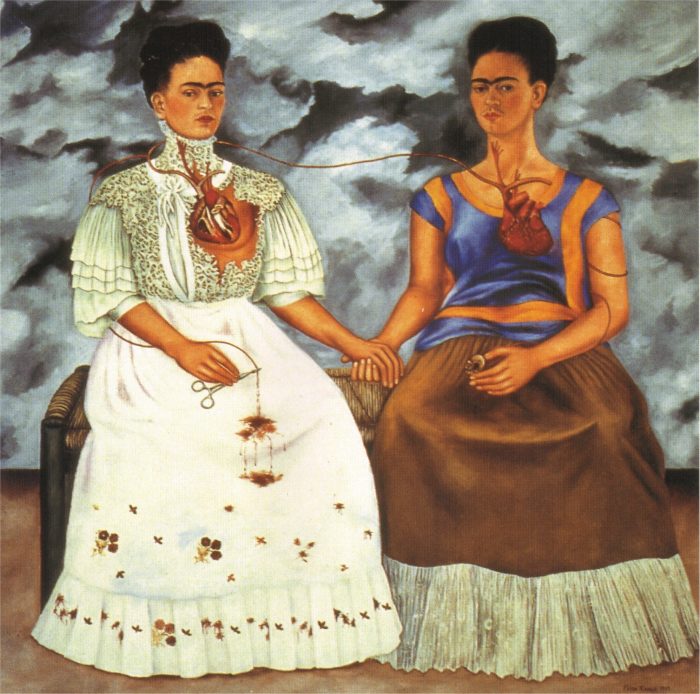
I’ve used this as the first artwork of the school year before, and the students loved it!
Beyond Discussion
Have students write dialogue between the two Fridas. Then, pair them up to act out their scripts in front of the class!
Find discussion questions and more for The Two Fridas in this blog post.
Closed by Sorcery by Luis Felipe Noe
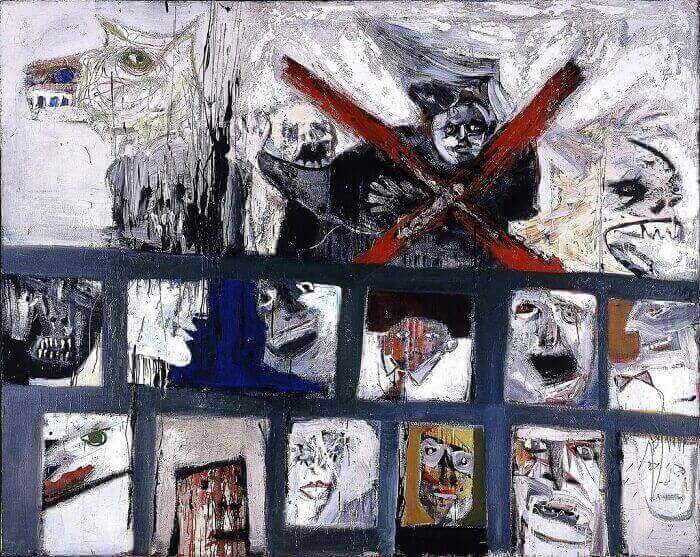
This artwork is perfect for older students. There are a lot of juicy details, deep emotions, and a bit of shock value to analyze and interpret.
Beyond Discussion
Instruct students to write a poem from the point of view of the person at the top of the artwork.
Find more activities and some discussion questions on this blog post about Closed by Sorcery.
Fate of the Animals by Franz Marc
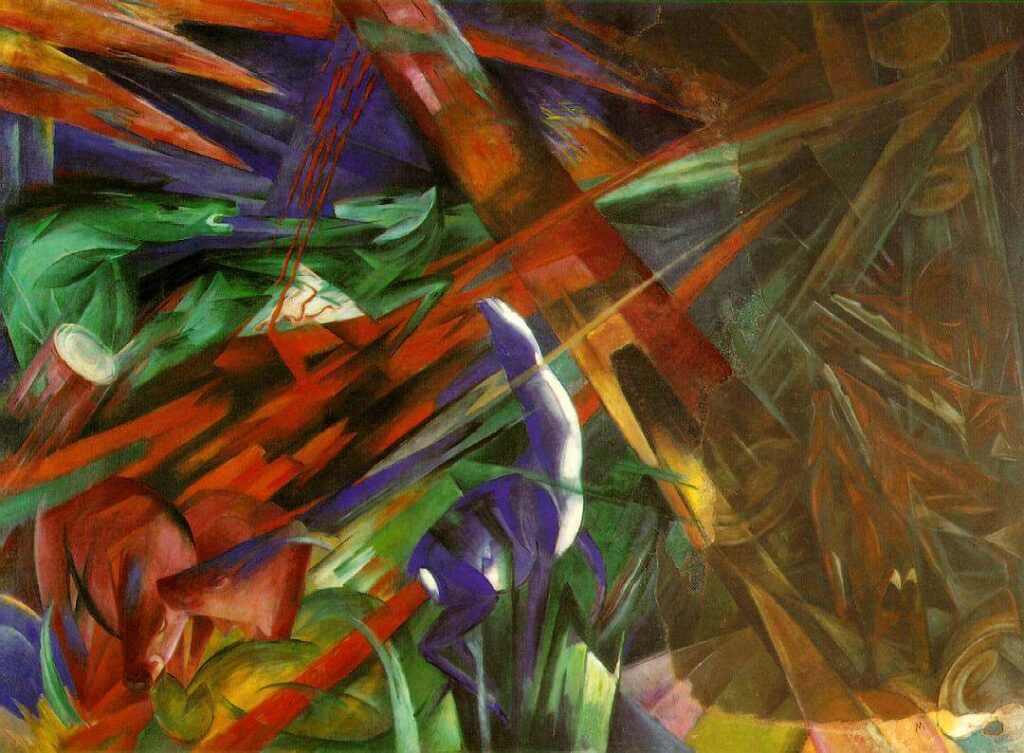
This artwork is a stunning mixture of brilliant color and raw emotion. There are multiple points to discuss, everything from the elements and principles of art to the cool World War I context. It’s a great pick for students from 3rd grade on up to high school.
Beyond Discussion
Ask students to ponder the nature of the creature in the top right hand corner. Then, have them write a narrative about the man/machine.
Find more information and teaching resources for Fate of the Animals in this blog post.
Nkisi Nkondi Power Figures from the Kongo people

These powerhouse sculptures are fascinating to students of all ages. They’ll be intrigued imagining the possible functions of the figures.
Beyond Discussion
Students will enjoy getting out of their seats for a kinesthetic activity! Getting up and positioning themselves in the poses of the sculptures often opens their minds to new interpretive possibilities.
Learn more about the Nkisi Nkondi Power Figures, along with discussion questions and creative learning activities, on this blog post.
Parson Weems’ Fable by Grant Wood
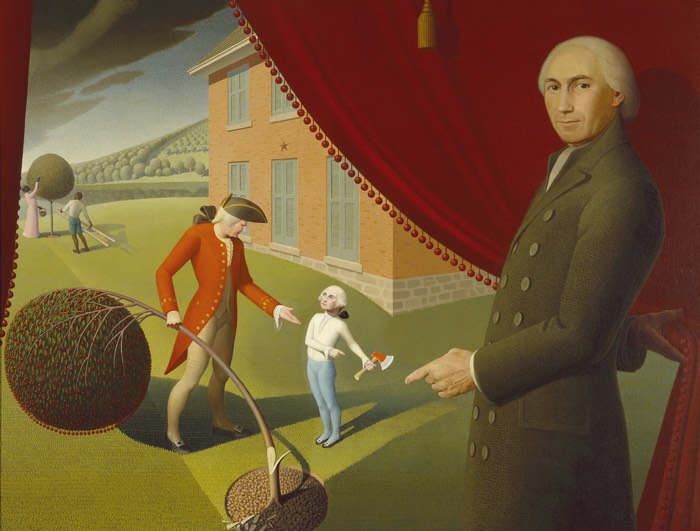
Many years ago, I was a Gallery Teacher at the Amon Carter Museum where this painting resides. This one was so fun to explore with students—the lines that all point to mini-George Washington, the repetition of shapes, the role of the narrator, and the awesome dollar-bill style head on the child George’s body. Not to mention the myth and the story behind it!
Beyond Discussion
After pointing out some of the shapes and discussing the role of emphasis lines in art, have students draw the ones they see in this artwork.
Explore the elements and principles in Parson Weems Fable and find matching discussion questions in this blog post.
Selim and Zuleika by Eugène Delacroix
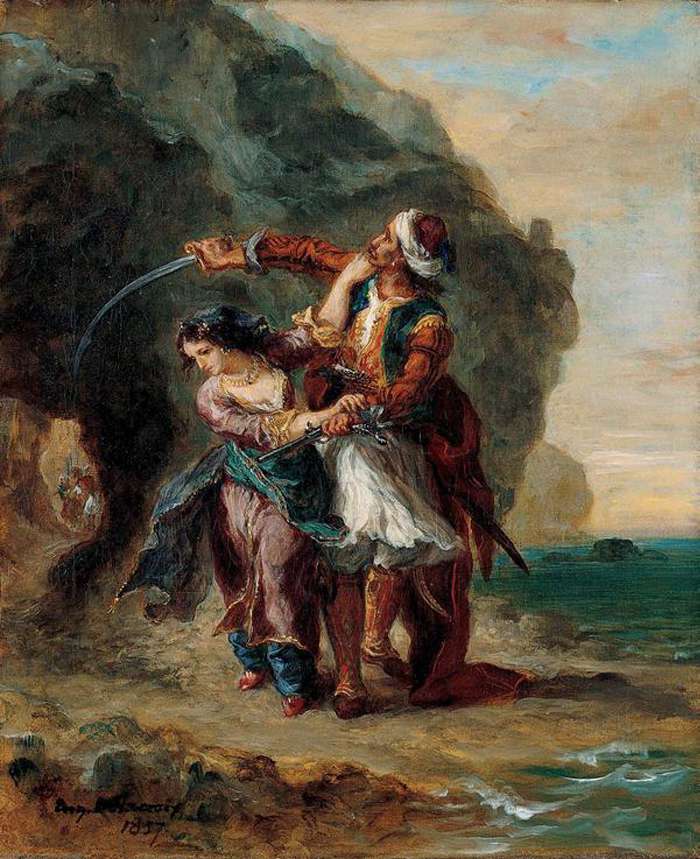
This artwork is perfect for an art interpretation discussion, because it has tons of narrative, excellent usage of the elements and principles of art that contribute to the meaning, and some great opportunities for detective work by the students.
Beyond Discussion
Group students and have them create a tableaux vivant of what they think happened before, during, and after this scene.
Find a free printable and a discussion video for Selim and Zuleika on this blog post.
Are you hyped yet? I hope so! Either way, let me know how it goes, especially if you share one of these breathtaking artworks with your students. If you have another work you love for first day of school art activities, I’d love to know about that too!
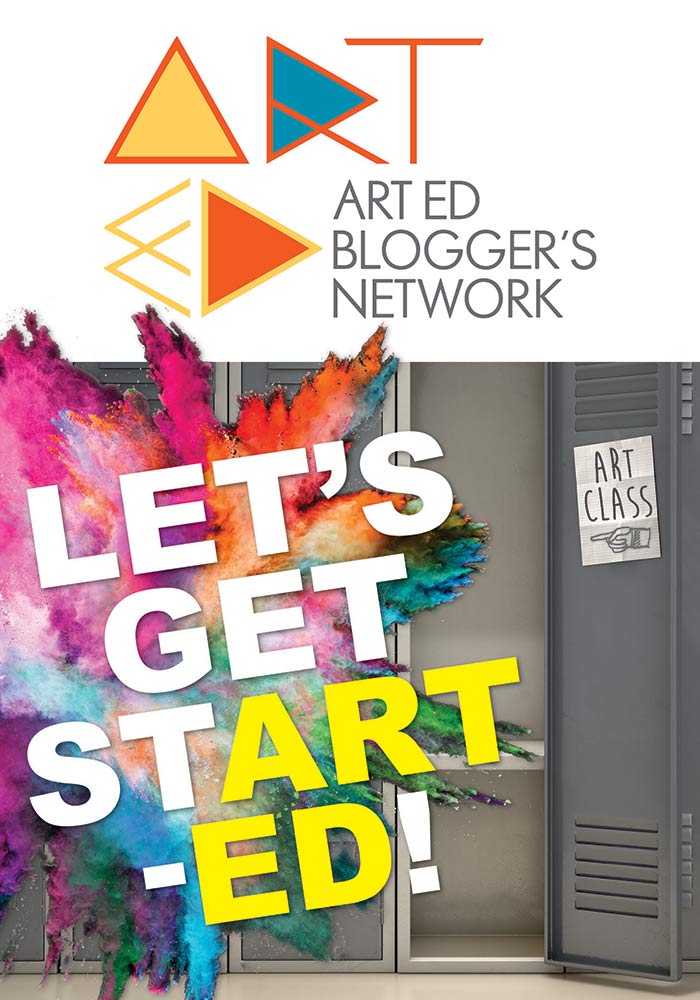
This post was a part of The Art Ed Blogger’s Network: Monthly Tips and Inspiration from Art Teacher Blogs.
Participating Art Teacher Blogs:
- Art Class Curator
- Art Ed Guru
- Art is Basic
- Art Room Blog
- Art with Mr. E
- Arte a Scuola
- Brava Art Press
- Artful Artsy Amy
- Capitol of Creativity
- Create Art with ME
- MiniMatisse
- Mona Lisa Lives Here
- Mr. Calvert’s Art Room Happenings
- Mrs. Boudreaux’s Amazing Art Room
- Mrs. T’s Art Room
- Ms. Nasser’s Art Studio
- Party in the Art Room
- shine brite zamorano
- Tales from the Traveling Art Teacher
- There’s a Dragon in my Art Room
This post was originally published on July 10, 2018.

